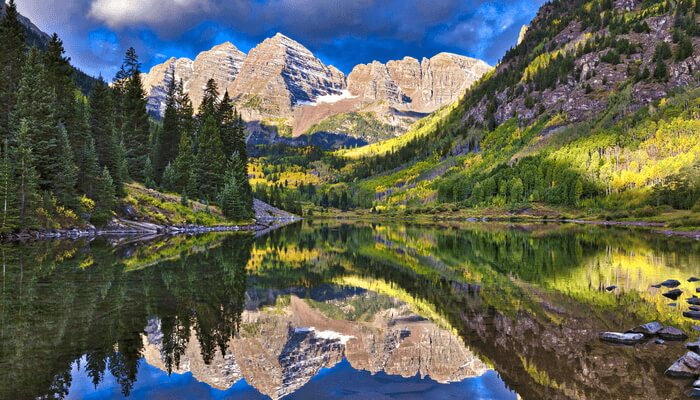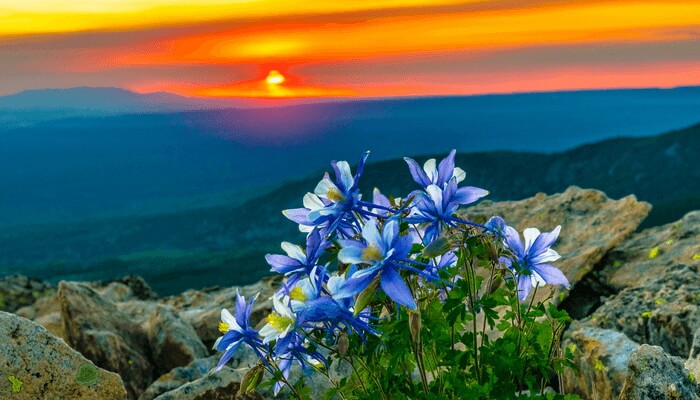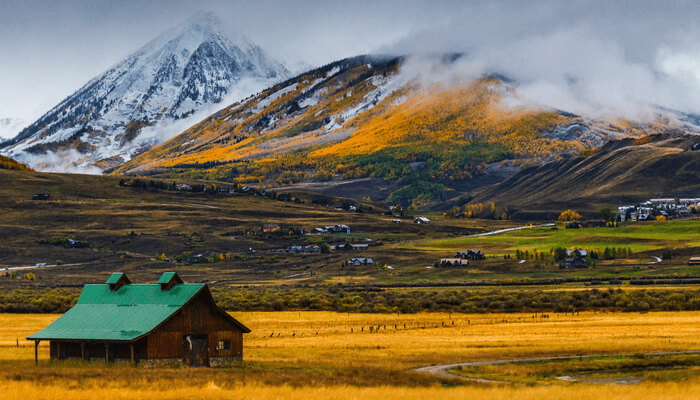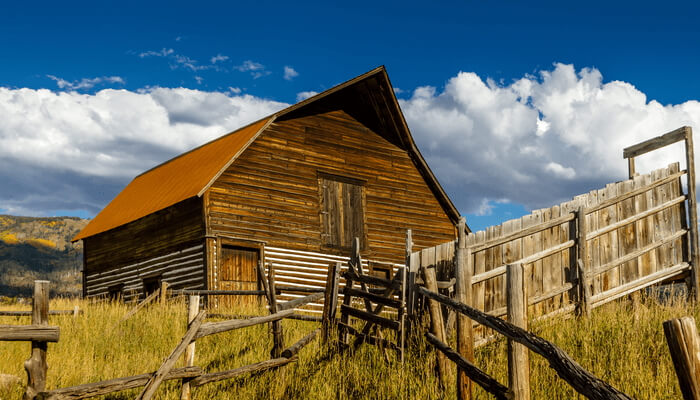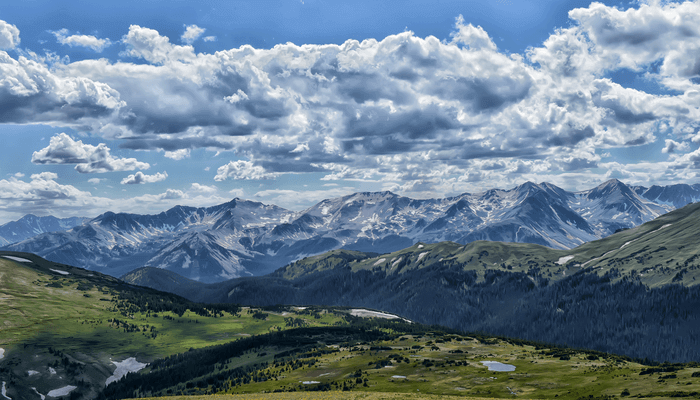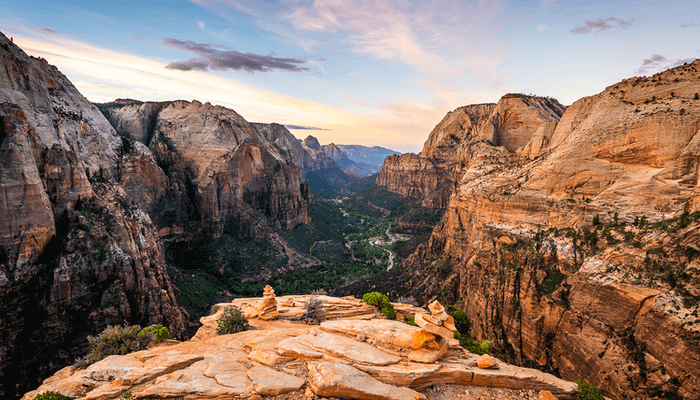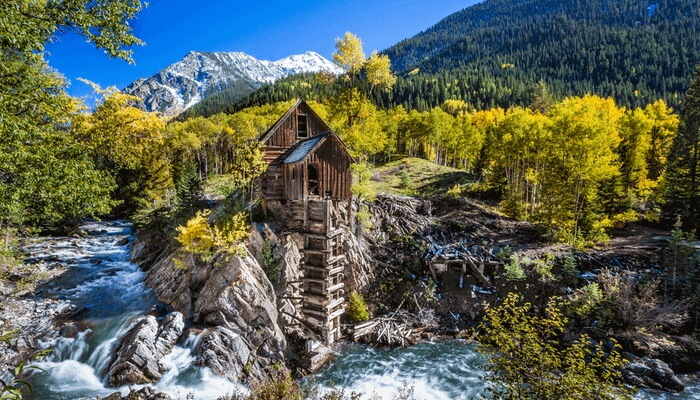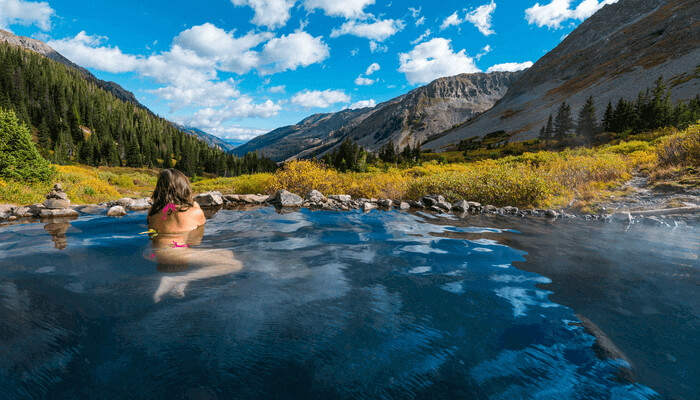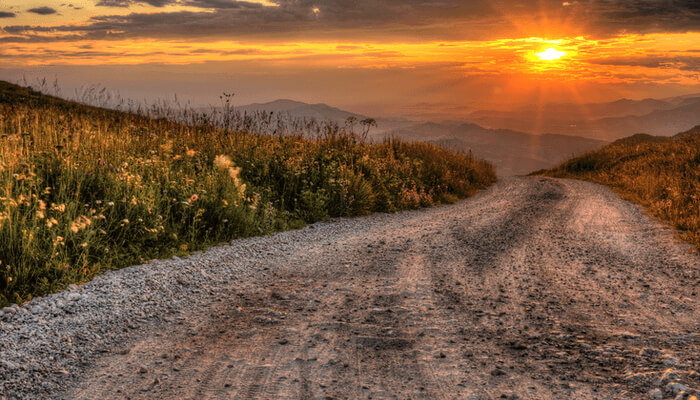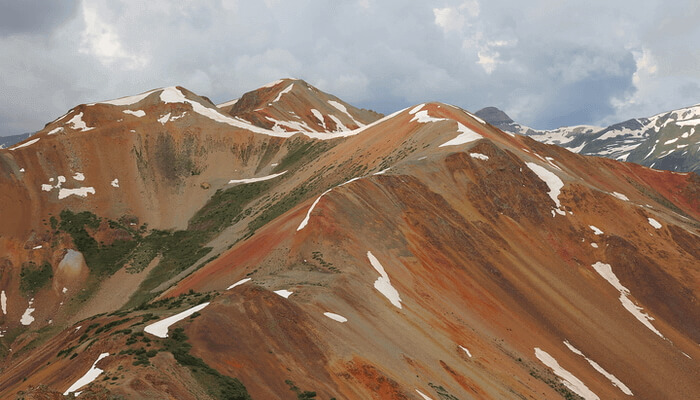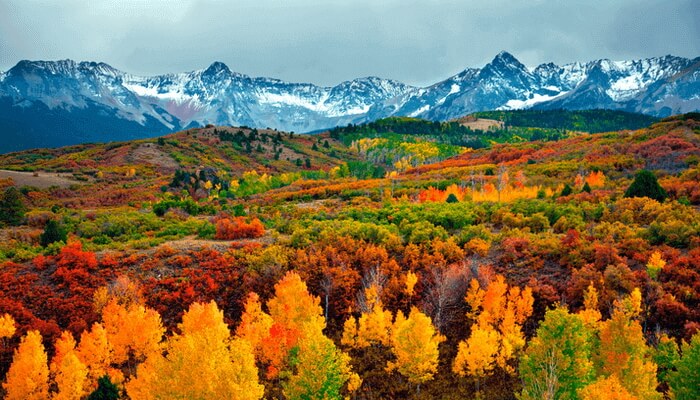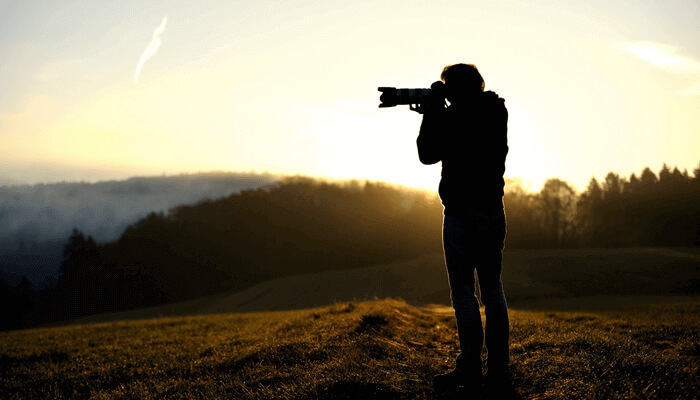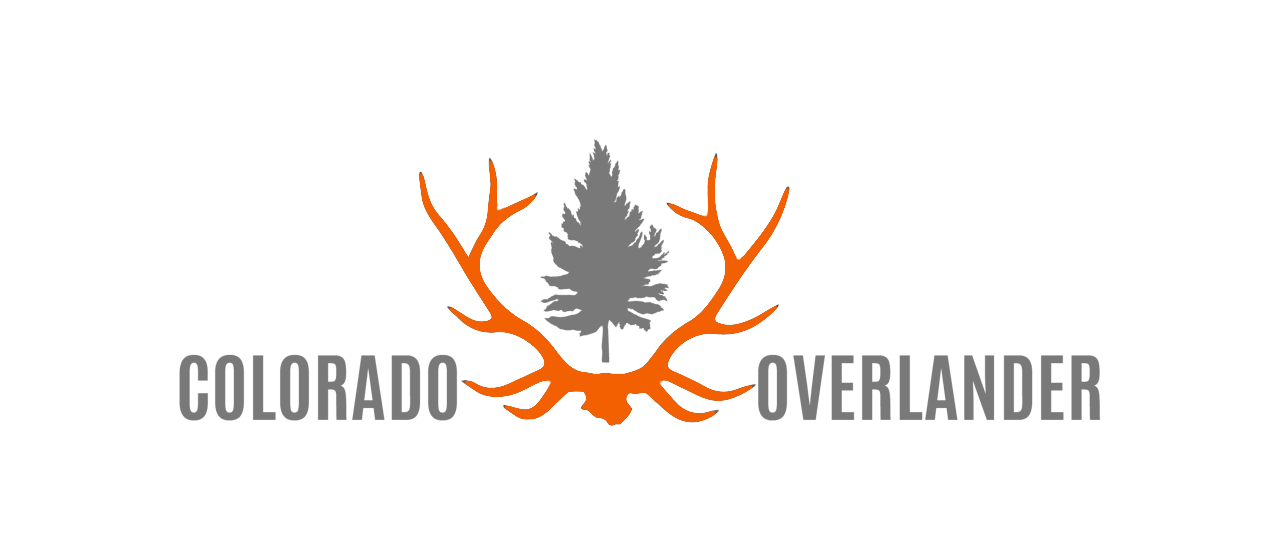THE ALPINE LOOP TRAIL – COLORADO OVERLANDER EDITION
One of the best things about renting an overlanding vehicle from Colorado Overlander is the freedom it brings. You and your adventures are no longer confined to the pavement. Any one of our fully rigged Toyota overlanding vehicles can handle the adventure of Colorado’s backcountry, and provides a comfortable night in even the most ‘creative’ campsites. There are thousands of miles of 4×4 roads which are perfect for overlanding, and one of the most iconic of these is the Alpine Loop Backcountry Scenic Byway in the San Juan Mountains between Ouray, Silverton and Lake City.
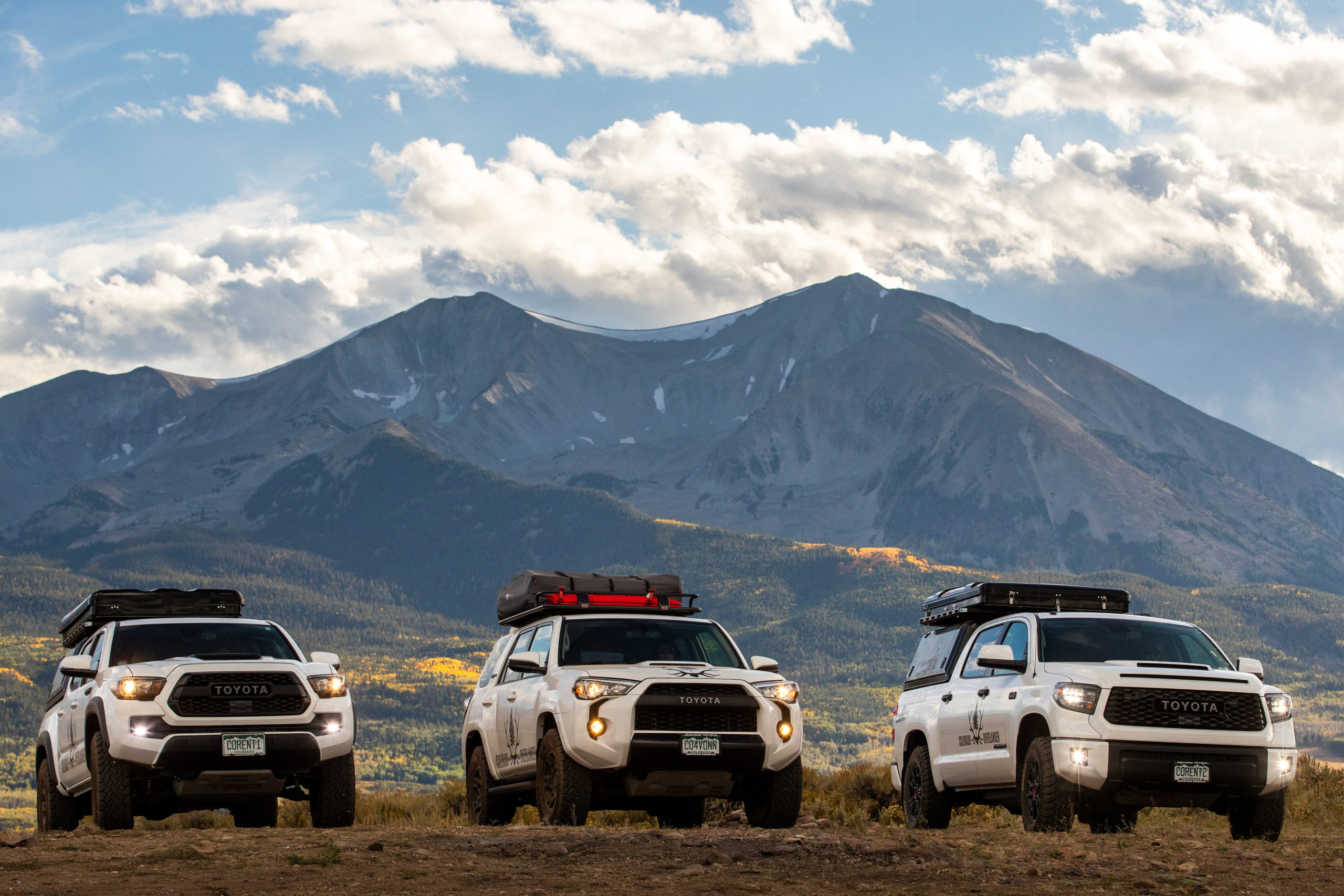
WHY ALPINE LOOP?
At 65 miles total, the Alpine Loop includes Engineer Pass, Hurricane Pass, Cinnamon Pass and Stony Pass (which is located along the Continental Divide at 12,800 ft). Drivers will follow a network of rough, ungraded roads though narrow valleys, up past old mining sites, and out onto the tundra of Colorado’s high country with views of the American Peaks. On any given day of overlanding on the Alpine Loop, you will likely pass clear mountain streams and waterfalls; abandoned mine sites; aspen groves and huge carpets of bright wildflowers or aspen groves in the full, fall color.
GET READY
It is important for us at Colorado Overlander to emphasize that many sections of the Alpine Loop require at least a moderate experience with driving 4×4 roads. And while all of our vehicles are equipped with the necessary gear, including an ARB Jack, ARB Recovery Equipment, TRED PRO Recovery Boards, and a full-size spare tires, drivers need to know, or be willing to learn, how to use all of these tools. Other important knowledge includes map reading skills and backcountry decision making as cell phone reception is not guaranteed, and emergency services would require hours to access most points of the drive. Many of the stretches along the Alpine Loop are exposed above treeline, or have sharp drop-offs with serious consequences. Understanding weather patterns in the Colorado high country, as well as lightning safety is important when overlanding in this rugged, Rocky Mountain terrain.
The most technically challenging access point of the drive is definitely the climb up from the Ouray side, up to Engineer Pass. This section of the road requires high clearance, 4×4 and a short wheelbase, and we would only recommend it for experienced drivers who chose the Lindsay Vaughan 4runner. Other advanced sections include Imogene Pass, Black Bear Pass, and Poughkeepsie Pass. Drivers interested in growing their backcountry driving experience, but don’t have a background in 4×4 driving should plan to access the loop from either Lake City or Silverton. Both towns have visitor centers with maps and information on road conditions.
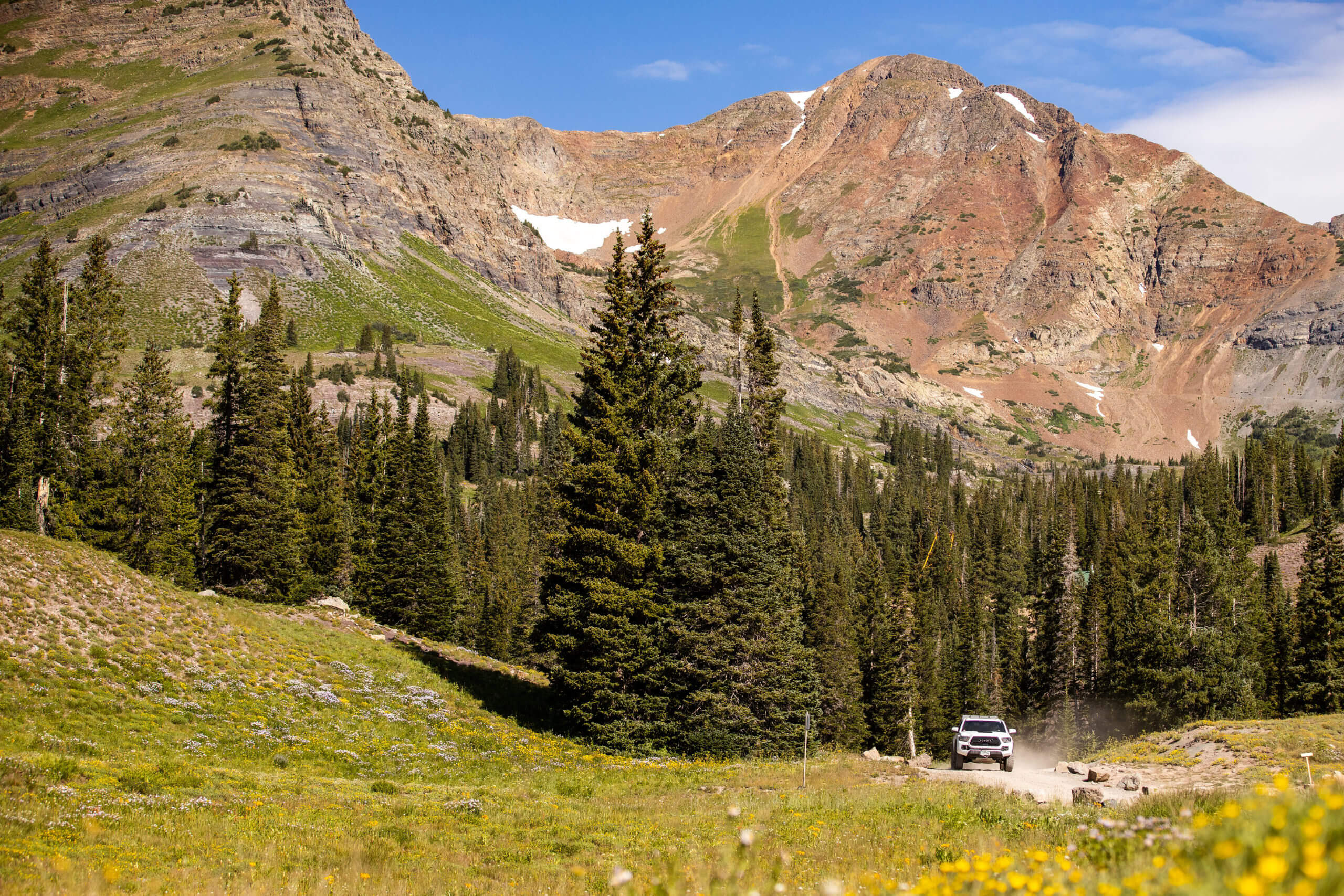
WHAT TO SEE
Along with the 4×4 driving and the wildflowers, one of the biggest attractions to overlanding Alpine Pass is its historical appeal. The roads were originally used by Native Americans crossing the passes in the summer, but were significantly improved and widened during the mining boom of the late 1800’s. Many mines still exist today, and have been either preserved or although none are in operation, offering great insight into what was a pivotal point in Colorado’s history. One of the most well-preserved is the Old Carson ghost town, although there were at least seven different towns built in the area during the height of the mining boom in the San Juan Mountains.
There are many stunning waterfalls to be viewed while overlanding the Alpine Loop as well. The best time to see the waterfalls is in early-mid July, once the snows have melted, but the water is still high. Whitmore Falls, on the way down Engineer Pass is one of the most iconic of these falls, with steps down to a stunning photo opportunity.
The most technically challenging access point of the drive is definitely the climb up from the Ouray side, up to Engineer Pass. This section of the road requires high clearance, 4×4 and a short wheelbase, and we would only recommend it for experienced drivers who chose the Lindsay Vaughan 4runner. Other advanced sections include Imogene Pass, Black Bear Pass, and Poughkeepsie Pass. Drivers interested in growing their backcountry driving experience, but don’t have a background in 4×4 driving should plan to access the loop from either Lake City or Silverton. Both towns have visitor centers with maps and information on road conditions.
WHEN TO GO
Because of its high elevation and extreme exposure, the roads of the Alpine Loop are often not fully cleared of snow until late June. The wildflowers offer their best shows in about mid-July, depending on the year. Carpets of red and blue and yellow will stretch across the tundra with a backdrop of the jagged American Peaks. Visitors coming for the wildflower season should be aware of the afternoon thunderstorm cycle which is prevalent starting in late July most years, and avoid being on exposed terrain about treeline outside of their vehicles whenever adverse weather occurs.
The other, perhaps most, popular time to overland the Alpine Loop is during the fall. Mid-September to early October offers the best opportunity to view the fall colors. Vibrant gold aspens stand around the road, their leaves and white trunks providing a gorgeous contrast to the dark firs and pines. Up above treeline, the tundra puts on a fall show that few get to see, as the ground is transformed into a crimson carpet.
WHERE CAN I CAMP?
Imagine waking up in your roof top tent, making coffee and taking in the stunning views of sunrise over the San Juan Mountains without another person in sight.
The best thing about 4×4 travel in an overland vehicle is that any flat parking space can become your own personal campground. Almost all of the Alpine Loop is located within the San Juan National Forest. Camping is legal on all National Forest land that is 100 feet from a water source and not prohibited by historical site designations. Because there are no designated campgrounds, however, it is important to bring everything you need with you including potable water and a waste disposal system. Be sure to stay on the road and only camp and travel on durable surfaces to protect the fragile nature of the alpine environment.
If you have any questions about where to go or what to bring on your Alpine Loop overlanding trip, Colorado Overlander is happy to help you plan to make sure you find the most epic experiences on your next adventures.
